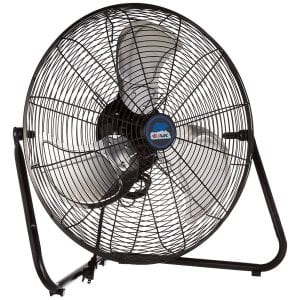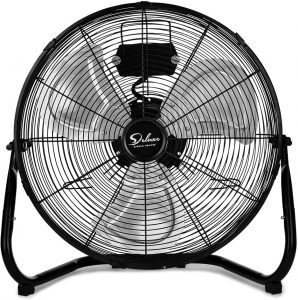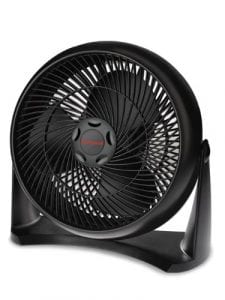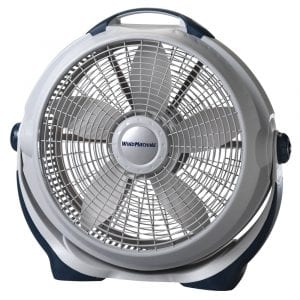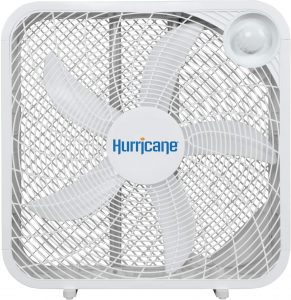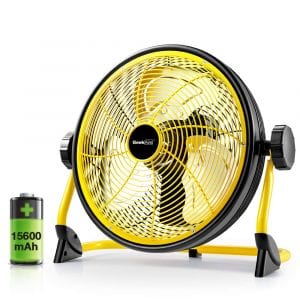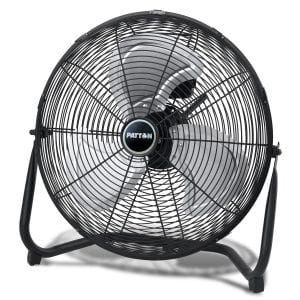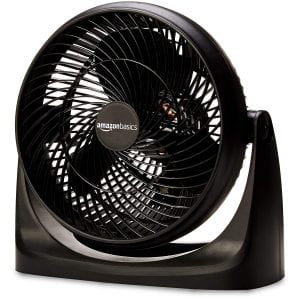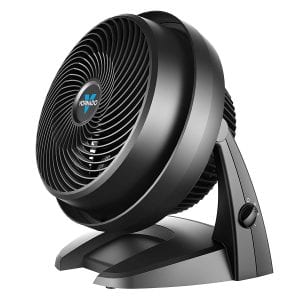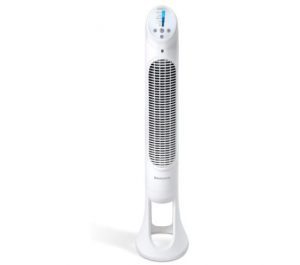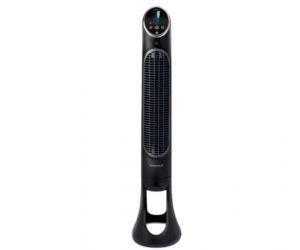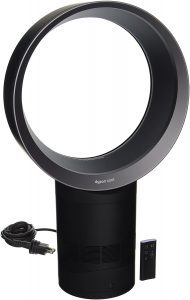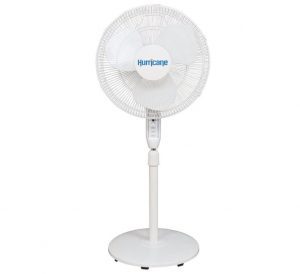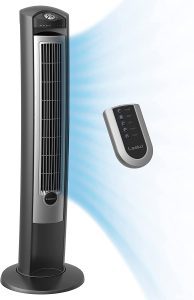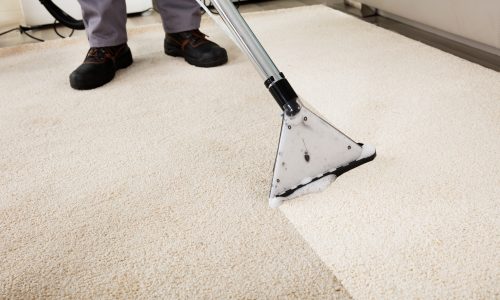The Best Floor Fan
We looked at the top 14 Floor Fans and dug through the reviews from 110 of the most popular review sites including and more. The result is a ranking of the best Floor Fans.
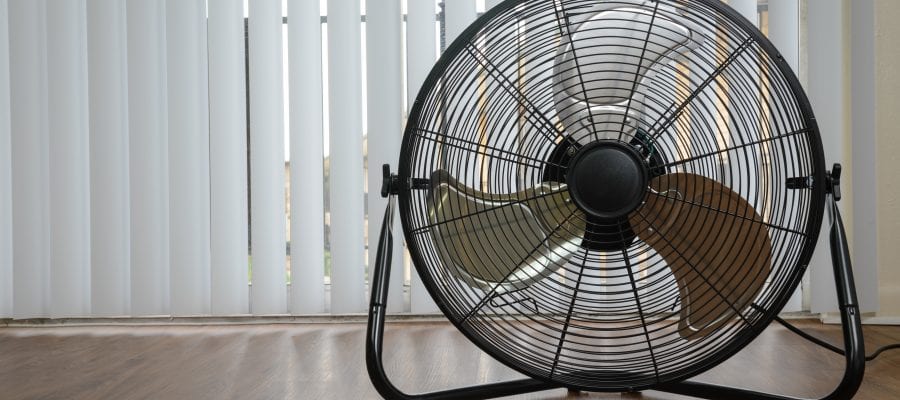
Our Review Process
Don't Waste Your Money is focused on helping you make the best purchasing decision. Our team of experts spends hundreds of hours analyzing, testing, and researching products so you don't have to. Learn more.
Our Picks For The Top Floor Fans
- 1. B-Air FIRTANA-20X Manual Metal Floor Fan, 20-Inch
- 2. Simple Deluxe Basement Reinforced Wire Floor Fan, 18-Inch
- 3. Honeywell HT-908 Customizable Indoor Floor Fan, 12-Inch
- 4. Lasko 3300 Lightweight 5-Blade Floor Fan, 20-Inch
- 5. Hurricane HGC736501 Space-Saving Floor Fan, 20-Inch
- 6. Geek Aire Cordless Indoor/Outdoor Floor Fan, 12-Inch
- 7. Patton Tilt-Head 3-Speed Floor Fan, 18-Inch
- 8. AmazonBasics Improving Air Flow Floor Fan, 11-Inch
- 9. Vornado 630 Vortex Multi-Directional Floor Fan, 12-Inch
- 10. Honeywell Quiet Set Oscillating Standing Floor Fan, 10-Inch
- 11. Honeywell HYF290B QuietSet 8-Speed Programmable Floor Fan, 10-Inch
- 12. Dyson Air Mulitplier AM06 Remote Control Floor Fan, 10-Inch
- 13. Hurricane Battery Powered Side-To-Side Floor Fan, 16-Inch
- 14. Lasko Nighttime Setting Tower Floor Fan, 13-Inch
This 20-inch floor fan works great in a variety of spaces, including a back porch, garage or fitness gym. It is equipped with a powerful motor and features three different speed settings. Users will also love that the fan tilts and that it can be set on a floor or hung up on a wall.
Most VersatileThe small grid on this floor fan ensures tiny fingers and small animal paws are kept safe from the fan's spinning blades.
If you work in a warehouse, car garage or factory space that tends to remain hot, you'll want to pick up a few of these floor fans. The industrial-style fans are constructed using aluminum blades and durable metal grills, so you can count on them lasting as long as 5 years. Users can also customize the fans, thanks to the 360-degree tilt and three ...
Stay Cool While WorkingYou'll find a set of handles on this floor fan's rear guards, allowing for easy repositioning when needed.
This floor fan is a great fan for smaller spaces. Offering consumers the Best Value, it is quiet, small and versatile. It can fit on a tabletop or go on the floor, and with a longer cord, it can reach the places that need it. The fan head pivots back and forth so you can aim it upwards or downwards. In addition, the noise level it produces is next ...
Small But MightyThis floor fan packs a punch with its excellent cooling abilities and quiet motor.
We like how the five blades on this floor fan move a ton of air without using a lot of energy. The fan rotates up and down to give you options on what angle to have it blowing at as well.
Powerful and EfficientThis floor fan model moves a lot of air without consuming too much energy, making a great 20-inch fan to have.
Buying Guide
When that summer heat strikes or you need some background noise, a good floor fan can be your best friend. There are several types of floor fans to meet your needs. You will find that one kind works better in small spaces versus large areas. Also, some have more powerful motors that can circulate the air much better than others. There are several styles and designs, so you can even personalize the look to complement your space. Before shopping, let’s take a look at how fans function.
There are three main ways fans operate. An axial fan is a unit that uses its blades to produce the current of airflow. You can increase or decrease the intensity of the breeze, depending on the number of blades, length of the blades and how quickly the blades rotate. The direction of the blades also plays a role in the effectiveness of the fan.
Another way for a fan to create a breeze is with a centrifugal design. In this type of fan, the blades are perpendicular to the breeze being created. The centrifugal fans are good for controlling humid areas since they make a higher-pressure breeze current. They work to negate humid spaces as well, such as basements and attics.
A third way that a fan works is with bladeless systems. Although these fans appear to be completely void of blades, they are just well-hidden in the base along with intake vents. The air that is sucked up through the intake valves is released out a small opening in the top circular part. In addition, the air around the fan is sucked into the circulation and produces an even stronger breeze. The biggest pro to the bladeless system is the consistent airflow that it creates and the sleek appearance to the unit itself.
When shopping for floor fans, the measurement you want to pay attention to is the CFM or cubic feet per minute. This is the amount of airflow that the fan gives off across a measured area, during a minute’s time. A good rating is around 670 CFM for a small room fan. You can’t always find this measurement on the packaging because most fans have multiple settings. With each setting is a different CFM rating, and the rating wouldn’t be accurate for different sized and designed areas. For example, if your space has an entire wall of windows but another consumer’s space has insulated walls all the way around, the effectiveness of the fan would be drastically different. This, among other factors, including the number of occupants, can influence how quickly a fan will cool a space.
After you’ve decided what kind of fan you’d like for your space, you’ll want to pick a style. Tower fans offer sleek appearances and a wider range of breeze from the other types.
The pedestal fans feature floor stands that the fan sits atop for high-reaching air circulation. They are used mostly in buildings with high ceilings, such as churches, warehouses or even outdoors. You’ll find them quite effective on a sticky day when the humidity is high, and there is no breeze to be found.
Personal fans are perfect for smaller spaces such as bedrooms or bathrooms. Don’t let the small size deceive you — these fans do a phenomenal job of circulating the air.
You’ll want to take your space into consideration when buying a floor fan. The number of windows, the number of people usually occupying the room, the height of your ceilings and the amount of sunlight it gets are all things to consider when picking the right fan. When you take all the factors into account, you will surely find the best floor fan for your space.
Why we recommend these floor fans?
Products Considered
Products Analyzed
Expert Reviews Included
User Opinions Analyzed
Our experts reviewed the top 14 Floor Fans and also dug through the reviews from 110 of the most popular review sites including and more. The result is a ranking of the best of the best Floor Fans.
DWYM is your trusted roduct review source. Our team reviews thousands of product reviews from the trusted top experts and combines them into one easy-to-understand score. Learn more.
The Best Bang For Your Buck
Honeywell HT-908 Customizable Indoor Floor Fan, 12-Inch
Key Takeawy
This floor fan is a great fan for smaller spaces. Offering consumers the Best Value, it is quiet, small and versatile. It can fit on a tabletop or go on the floor, and with a longer cord, it can reach the places that need it. The fan head pivots back and forth so you can aim it upwards or downwards. In addition, the noise level it produces is next to nothing.
What other experts liked
What other experts didn't like
What to Look For
- For a large room, you may want to consider an oscillating floor fan. This will help keep the air circulating throughout the room as the fan turns.
- If you want to conserve energy but keep the air moving, opt for a fan that has a timer setting. Set it to go off when you plan on leaving the house and your energy bill will reflect your savings.
- The tower fans are ideal for small spaces. They are tall and thin and can be tucked into a corner away from foot traffic.
- Consider noise levels of the fan while in operation. If you will be using a fan in an office setting, you may want to go check out fans at the store first before buying online. This will help you decide if the noise is tolerable or not for your space. On the other side, if you need some noise to sleep and that is a secondary purpose of your floor fan, you’ll do best to try out fans in the store.
More to Explore
Dating back to roughly 3000 BC, the first fans were recorded as used by the Romans, Greeks and Etruscans. They used folding fans for both ceremonies and as cooling devices. Meanwhile, the Chinese used the folded fan as a way of story-telling. The Europeans didn’t see fans until they were brought over in trades. Seen as a sign of wealth, these fans featured ivory, tortoiseshell and pearl handles and ribs. They were often created with gems and stones as decoration.
It wasn’t until 1886 that the first electric fan came on the market. It was made by Schuyler Wheeler and was DC-powered. Just a decade later, they became AC-powered and have progressed in their electrical features ever since. General Electric was the genius behind the quiet, overlapping blades design that was released in the 1920s. Nowadays, you have countless options for floor fans on the market.

